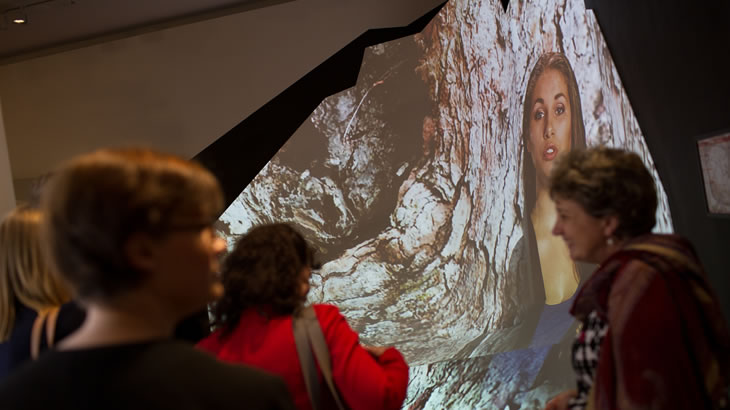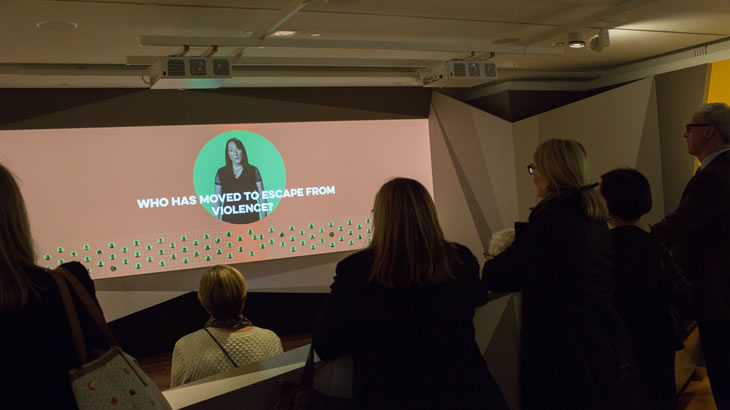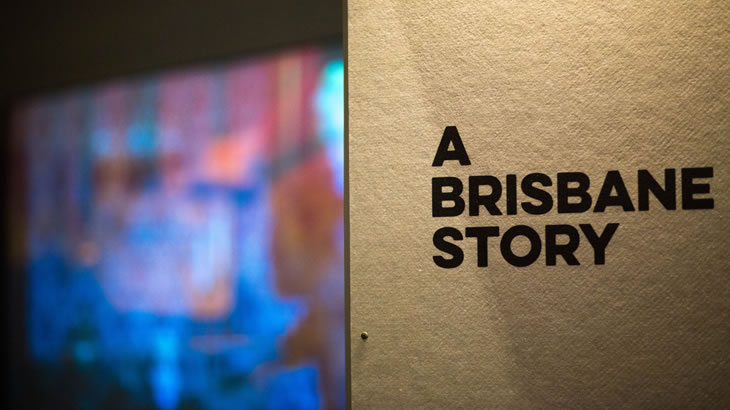
Hitachi helped to make 100% Brisbane a reality by providing seven projectors, including their ultra short throw and large venue projectors which were installed with specialised lenses for particular installations within the exhibition. Each data projection solution had to overcome challenges and demands unique to that particular space:

Country is the first section visitors encounter as they enter the exhibition. A stunning and powerful selection of interviews with members of the Aboriginal community are projected onto a five-metre, irregular-shaped wall. Hitachi’s CPWU9411 DLP projector and Hitachi’s USL901 ultra short throw lens were chosen to projection-map the video content in a small section of the gallery. The result is a compelling and unique experience within the exhibition.

One of the most popular sections of the exhibition is A Day in the Life of Brisbane, a six-metre digital interactive learning wall where visitors are encouraged to discover interesting facts about the city by touching and interacting with the display. The wall is brought to life by three Hitachi CPAW3005 ultra short throw projectors, capable of delivering dynamic and interactive content in narrow spaces and bright environments.

Brisbane DNA is a fascinating and deeply moving 90-minute film that reflects the thoughts, opinions and life stories of 100 Brisbane residents. This cinematic snapshot of Brisbane life is projected onto a five-metre wall using two Hitachi CPHD9321 full HD large venue projectors paired with Hitachi’s USL901 ultra short throw lens, most suited to displaying content in a blended wide screen projection installation.

A Brisbane Story is a short film written and presented by acclaimed author and actor William McInnes.
Frank Casablanca, Exhibition Technical Officer at Museum of Brisbane, recognised that this section of the exhibition required a projection solution capable of delivering video content in a tiny space.
“What we try and do here at the Museum is implement technology so it brings content to life. What was challenging about this theatre was producing a large projected image in a limited space. We were able to achieve this rear projection using one of Hitachi’s ultra short throw lenses.”
The film comes to life on a three-metre wall with Hitachi’s CPHD9321 full HD large venue projector and Hitachi’s FL910 ultra short throw mirror lens rear projection installation, capable of delivering bright, intense colour in spaces that would otherwise be considered too small.
Phillip Manning, Curator at Museum of Brisbane, chose to work with Hitachi because of their extensive range of superior data projection technologies, capable of delivering detailed and vivid images even in the most demanding environments.
“Being able to use the physical space of the galleries, to be able to tell stories that were of a scale that really captured the imagination of our visitors, that’s where the partnership with Hitachi really came to the fore,” said Manning. “There’s a great technology to be able to play with and adapt to multiple uses.”
On the next page, we look at how Hitachi's products and support that allowed the Museum to push their concept into reality.